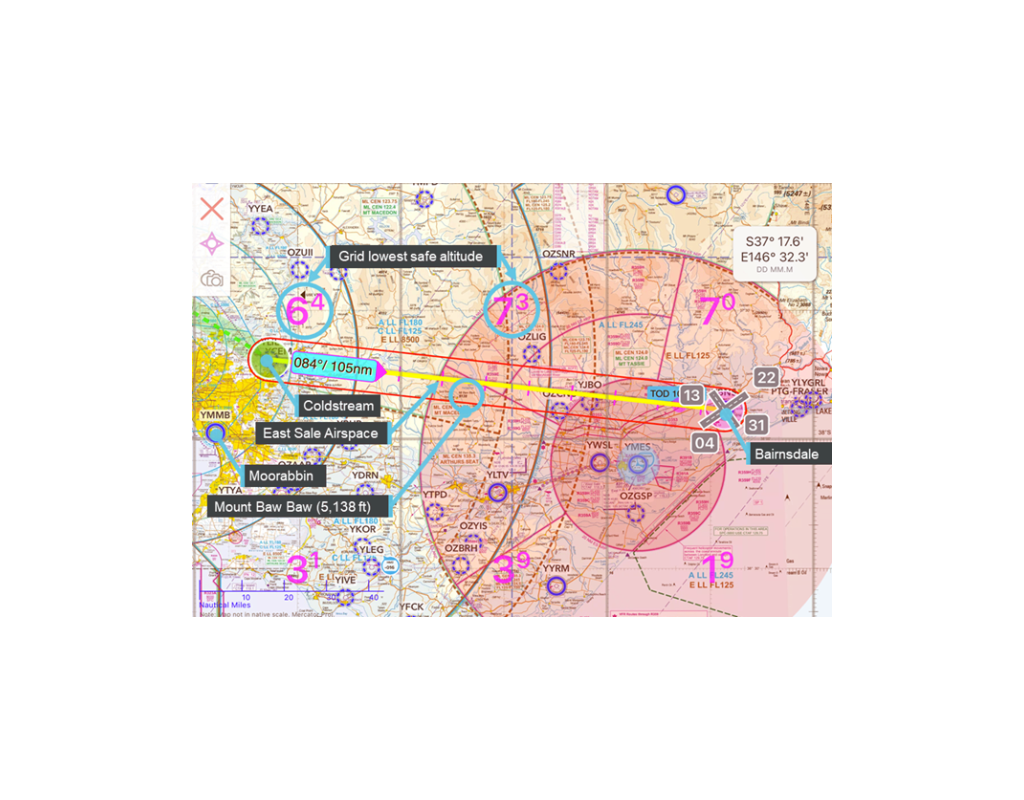
An incident where a police air wing AW139 helicopter flew below the lowest safe altitude in the vicinity of Mount Baw Baw, Victoria, highlights the importance of lowest safe altitude calculations, according to an Australian Transport Safety Bureau (ATSB) investigation.
On the morning of 4 March 2021, the crew of a Victoria Police Air Wing AW139 was re-assigned from an aerial search near Coldstream, Victoria to a search and rescue task near Orbost. Due to cloud en route, the pilot upgraded the flight from visual to instrument flight rules.
While transiting to Bairnsdale at a cruising altitude of 5,000 ft, the helicopter entered cloud and shortly after the enhanced ground proximity warning system (EGPWS) activated with a ‘caution terrain’ alert. The pilot initiated a climbing left turn to avoid Mount Baw Baw, which has a maximum elevation of 5,138 ft.

At the time of the EGPWS alert, the helicopter was about 1.8 NM (3.3 km) horizontally from and 200 ft above terrain. A few moments later during the left turn, a second EGPWS alert activated, while the helicopter was at 5,150 ft and within 0.8 NM (1.5 km) horizontally and 350 ft above terrain.
The helicopter exited cloud to the north of Mount Baw Baw and the pilot contacted air traffic control to request a climb to 6,000 ft. The flight continued to Bairnsdale without further incident.
“Lowest safe altitudes are published on aeronautical charts and in publications to ensure a minimum 1,000 ft obstacle clearance when aircraft are operating under instrument flight rules,” ATSB Director Transport Safety Dr Stuart Godley explained.
“In this incident the helicopter was below the lowest safe altitude as, based on their estimate of height above the cloud tops, the pilot had incorrectly assessed the in-flight conditions as visual meteorological conditions after the helicopter reached 5,000 ft in the vicinity of Coldstream,” he said.
“As a result, the pilot elected to remain at 5,000 ft instead of recalculating the lowest safe altitude as the flight progressed.”
Day visual meteorological conditions are an acceptable reason to operate below lowest safe altitude. As the flight progressed the pilot observed the cloud tops beginning to rise, but initially believed they would pass just over the cloud tops. However, the helicopter entered cloud just below the cloud tops while the pilot was continuing attempts to contact East Sale air traffic control.
The ATSB’s investigation found that the operator did not have a procedure for pilots for upgrading from visual to instrument flight rules when in flight.
Particularly in single-pilot operations, this would reduce the likelihood of an error when replanning in-flight, which the operator reported to be an infrequent and higher-than-normal workload task.
“Our investigation highlights the importance of lowest safe altitude calculations and to recalculate the lowest safe altitude appropriate for the area of operations,” Dr Godley said.
“Operators should also review their operations manual to ensure they have procedures in place to adequately capture their operating procedures in order to minimize the likelihood of decision‑making errors.”
Following the incident, the Victoria Police Air Wing developed an instrument flight rules upgrade procedure for inclusion in its operations manual. This procedure includes the acceptable methods for calculating lowest safe altitude and was circulated to all their pilots.
This press release was prepared and distributed by the Australian Transport Safety Bureau.



